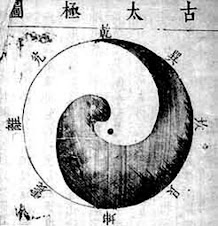
Welcome back. Hello once again.
Next week I am going to visit Berlin. I am so excited that I can't wait. In there I will meet my old friend Arturo who is going to be my personal guide. Tomorrow I have to go downtown to pick up my wallpaper city guide. And I will study it for the rest of the week to decide which landmarks I want to visit. But there is one garden I don't want to miss at all. The japanese garden Yuusui-en(lit. garden of confluent waters)is part of the larger gardens of the world project that includes between them a balines garden, a chinese garden and a korean garden.

As one enters the gate, the path immediately veers right and a staircase leads up a hill. Since there are hedges and bushes on both sides of the way, you cannot catch a glimpse of the garden until having almost reached the top of the hill. (This technique of hiding the garden reminds of the upper villa of Shugakuin Rikyu in Kyoto and is used twice within Yuusui-en: At the beginning of the course and also before turning back and entering the pavillion.) From the top of the hill, you have a wonderful overview over the whole garden: the dry waterfall in karesansui style, the murmuring creek with real water and the pavillion 'Nyosui-tei' where both waters meet. The creek symbolizes the flow of time from the beginning of German history, ending in a tiny pond which reflects the recent history. The dry waterfall symbolizes the future. The pavillion is located in the present - the center of both waters, between past and future. The stone arrangement in the middle of the karesansui-style pond is a symbol for a carp, showing strenght and perseverance in swimming against the stream.

That's all for today folks. I hope I will bring some pictures of myself in the garden when I'll come back.
Happy weekend.
Write you soon.































